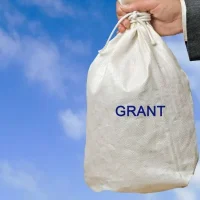Deadline: 8-Jul-25
The Toronto Arts Council is partnering with Evergreen Brick Works, Toronto History Museums and The Village at Black Creek on an initiative intended to create opportunities for Toronto artists to animate selected historic sites and museums located in Toronto outside of the downtown core.
The goals of the program are to serve as a catalyst for people to see and think about historic places differently; to create avenues for deep engagement with the arts in neighbourhoods, with a focus on those outside the downtown core; to create new audiences for artists and for museums and historic sites; and to address the growing need for access to space for the arts. This program envisions historic sites as vital public spaces of social interaction, where the past provides creative context for the future.
What does this program support?
- The Animating Historic Sites program provides funding to professional artists, arts organizations and collectives working in any artistic discipline (i.e.: theatre, dance, music, visual arts, media arts, community engaged arts, Indigenous arts, Black arts, disability arts, arts education, literary arts, etc.) to pursue time limited projects involving site-specific research, development, creation, production, presentation, and programming that responds to or interprets the selected site or museum.
- Grant recipients will have the opportunity to conduct artistic research; explore the site and its exhibits, archives, surrounding landscape, historical and environmental context; engage with the local community; and present new site-responsive work in collaboration with the site or museum. The recipients will deliver free site-specific programming following research and development, which may vary in scope depending on the project. Programming may include activities such as: exhibitions, installations, performances, concerts, screenings, readings, workshops, presentations of work in progress, community-engaged arts activities, and other arts programming. Permanent exhibitions and installations are not eligible. All funded projects will be produced by the grant recipient and hosted and supported by the partnering site.
Funding Information
- The maximum grant amount is $30,000.
Eligibility Criteria
- This grant program is open to professional artists, not-for-profit arts organizations or artist collectives operating on a not-for-profit basis.
- A professional artist is someone who has developed their skills through training and/or practice; is recognized as such by artists working in the same artistic field; actively practices their art; seeks payment for their work; and has a history of public presentation.
- TAC recognizes that due to systemic barriers within the broader arts community (e.g., limited mainstream presentation opportunities for artists from equity-seeking communities) some flexibility may be required in interpreting eligibility criteria to take into account equivalent professional experience and contexts. Potential applicants from equity-seeking communities are encouraged to discuss their eligibility with the Program Manager in advance of applying.
- You may not apply as an individual and be part of an organization or collective applying in the same competition.
- You may not apply for the same project in different grants programs.
- You may not apply as an individual or as part of an organization or collective if you are employed (full- or part-time) by City of Toronto Museum & Heritage Services, The Village at Black Creek, or Evergreen Brick Works.
- TAC has two distinct funding envelopes.
- Applicants may be eligible to apply for one grant in each category per year, so long as they have no incomplete projects or outstanding final reports. The two funding envelopes include:
- Arts Discipline: project and operating grants in dance, visual arts, theatre, etc.
- Strategic Programs: Artists in the Library, Open Door, etc.
- Applicants may be eligible to apply for one grant in each category per year, so long as they have no incomplete projects or outstanding final reports. The two funding envelopes include:
- For Individuals:
- Individuals must be Canadian Citizens or Permanent Residents or have an application pending for Permanent Resident Status or be a Protected Person (approved refugee claimant) and, if requested, be able to provide documentation to verify this. Grant recipients must have a Social Insurance Number.
- Individuals must have been a resident of the City of Toronto for at least one year prior to the deadline, and live and work in Toronto for at least 8 months a year. A Post Office Box address cannot be used to meet the residency requirement.
- Professional artists pursuing graduate studies may not apply for work related to their program of study.
- For Organizations and Collectives:
- Organizations and collectives must be incorporated non-profit organizations or unincorporated collectives which operate on a non-profit basis. A collective is defined as two or more artists working together under a group name, either on a single project (ad hoc) or on an ongoing basis.
- Not-for-profit organizations that are not arts-based are eligible to apply to this grants program. Projects must include the collaborative involvement of professional artists with community members, as well as the payment of professional artist fees.
- Organizations and collectives must be located in the City of Toronto. A Post Office Box address cannot be used to meet this requirement.
- For collectives of two artists, both must be City of Toronto residents. For collectives of more than two artists, the majority of members must be City of Toronto residents.
Ineligibility Criteria
- This program does not fund:
- Undergraduate students;
- Permanent installations;
- Commercial businesses and for-profit organizations;
- Ongoing operating costs, such as permanent staff salaries and general administration of an organization. This program is not intended to support an organization or collectives ongoing activities. Where a portion of permanent staff or administrative resources are dedicated to the project, you may estimate the value of these resources and include a detailed breakdown in the budget as in-kind revenue;
- Costs related to equipment purchase, capital projects (capital assets such as vehicles, computers or cameras to be used beyond the duration of the project), fundraising projects, deficit reduction, publishing and archiving projects, awards and award ceremonies, projects conceived for competitive purposes, art therapy, academic research, commercial activities (i.e.: the sale of art);
For more information, visit Toronto Arts Council.









































